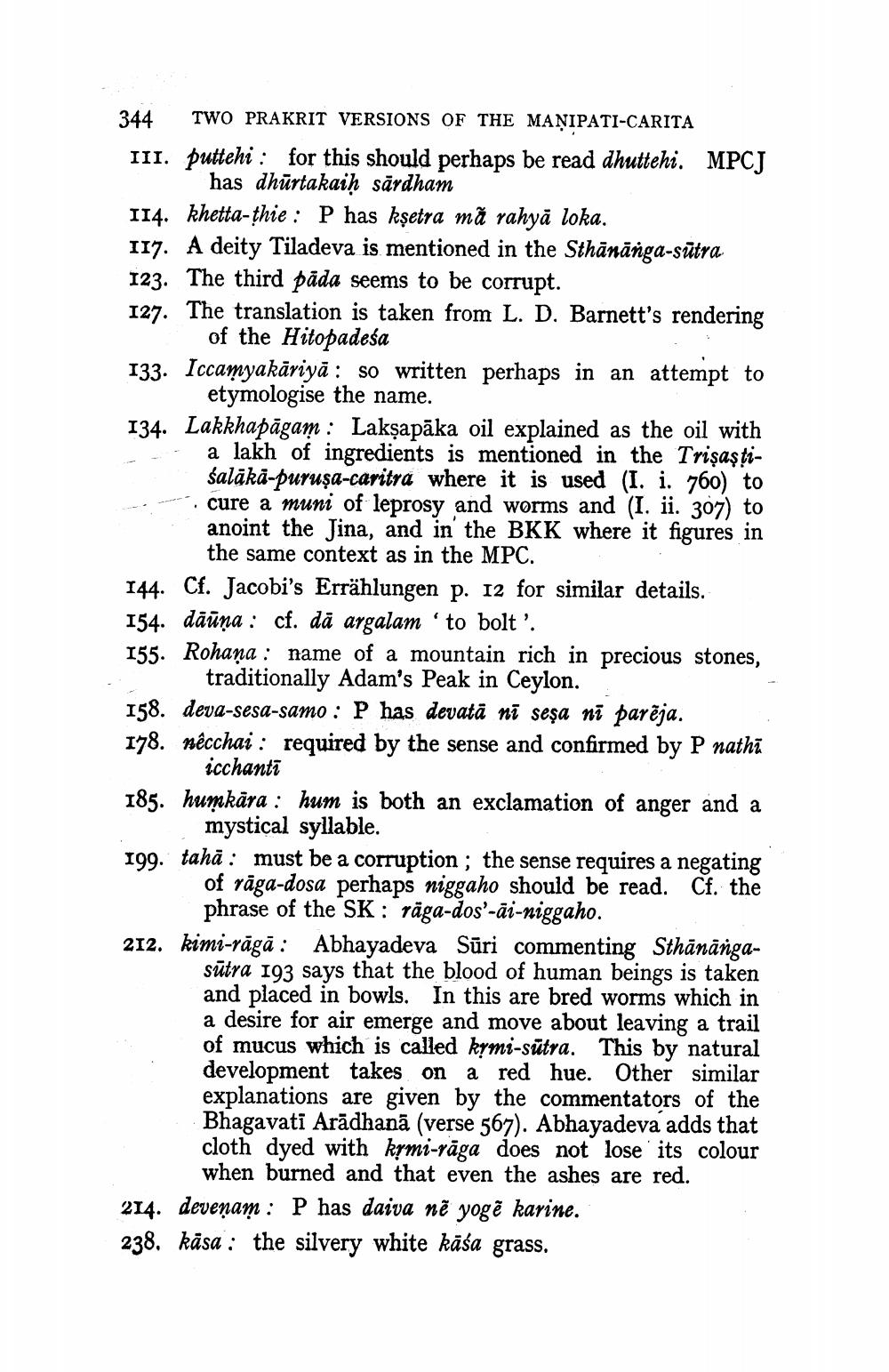________________
344 TWO PRAKRIT VERSIONS OF THE MAŅIPATI-CARITA III. puttehi : for this should perhaps be read dhuttehi. MPCJ
has dhūrtakaiḥ sārdham 114. khetta-thie : P has kşetra mã rahyā loka. 117. A deity Tiladeva is mentioned in the Sthānānga-sūtra 123. The third pada seems to be corrupt. 127. The translation is taken from L. D. Barnett's rendering
of the Hitopadeśa 133. Iccamyakāriyā: so written perhaps in an attempt to
etymologise the name. 134. Lakkhapāgam : Lakşapāka oil explained as the oil with
a lakh of ingredients is mentioned in the Trişaşți
śalākā-puruşa-caritra where it is used (I. i. 760) to - cure a muni of leprosy and worms and (I. ii. 307) to
anoint the Jina, and in the BKK where it figures in
the same context as in the MPC. 144. Cf. Jacobi's Errählungen p. 12 for similar details. 154. dāūna : cf. dā argalam 'to bolt '. 155. Rohana : name of a mountain rich in precious stones,
traditionally Adam's Peak in Ceylon. 158. deva-sesa-samo : P has devatā nī seşa ni parēja. 178. nêcchai : required by the sense and confirmed by P nathā
icchanti 185. humkāra : hum is both an exclamation of anger and a
mystical syllable. 199. tahā: must be a corruption; the sense requires a negating
of rāga-dosa perhaps niggaho should be read. Cf. the
phrase of the SK : rāga-dos'-āi-niggaho. 212. kimi-rāgā : Abhayadeva Sūri commenting Sthānānga
sūtra 193 says that the blood of human beings is taken and placed in bowls. In this are bred worms which in a desire for air emerge and move about leaving a trail of mucus which is called krmi-sütra. This by natural development takes on a red hue. Other similar explanations are given by the commentators of the Bhagavati Arādhanā (verse 567). Abhayadeva adds that cloth dyed with kymi-rāga does not lose its colour
when burned and that even the ashes are red. 214. deveņam : P has daiva në yogē karine. 238, kāsa : the silvery white kāśa grass.




